La Fitonia: [Characteristics, Planting, Care, Irrigation and Substrate]
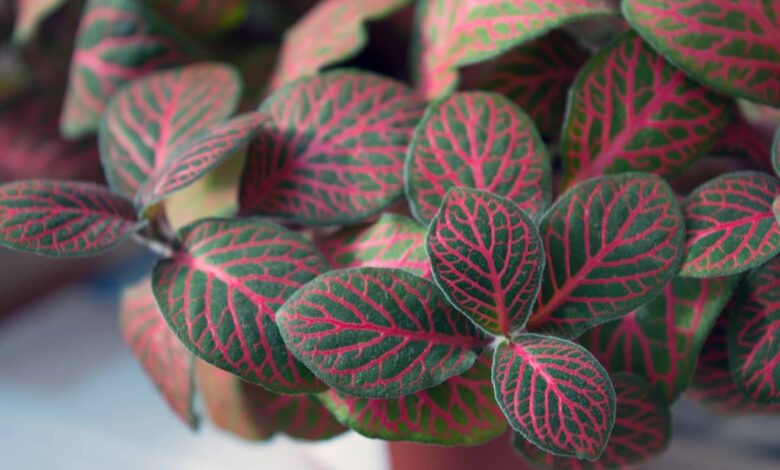
The Fitonia is a tropical plant as unique as it is beautiful. It has been used in gardens as an ornamental plant.
Its leaves are really curious, with differentiated patterns in the varieties that are presented, with colors ranging from white to pink or purple.
Characteristics of phytonia
- Name: Fittonia.
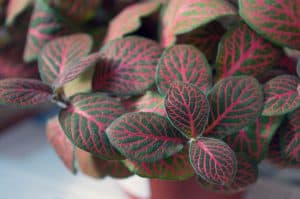
- Common name: nerve plant, mosaic plant, painted net leaf.
- Origin: South America.
- Family: Acanthaceae.
- Height: 1 to 3 meters.
- Exposure: partial shade or full sun.
- Foliage: evergreen.
- Flowering: spring.
Its height in pot reaches about 10 cm to 15 cm maximum. That is why it is a creeping type plant, which will cast long stems horizontally. Hence, it is also considered as a ground cover plant.
Did you know…?The leaves are the main attraction.
They measure about 3-5 cm at most, but they make themselves very noticeable thanks to a rich range of tones that go from yellow to red, with deeply sculpted nerves, which makes a contrast impossible to ignore.
Originally from regions of South America, it is widely seen in the jungles of countries such as Peru, Brazil, Ecuador and Colombia.
There is a mini Fitonia in shades of purple and white, very delicate, ideal for combining it in an arrangement with other indoor plants, because it is a very good neighbor. Its flowers, not very showy, appear in the spring.
Temperature: Where to plant phytonia?
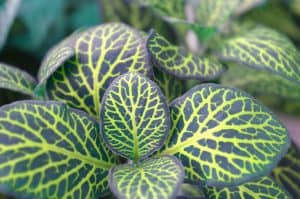 Sadly, Phytonia will die if you subject it to cold temperatures below 15°C, although its development will most likely stop. You can also witness how its leaves wither.
Sadly, Phytonia will die if you subject it to cold temperatures below 15°C, although its development will most likely stop. You can also witness how its leaves wither.
But it does resist the environmental heat very nobly, since it comes from the American tropics.
The ideal then is to keep it at an ambient temperature that ranges between 20 to 28 ° C. Perhaps the most preponderant factor in giving it health is temperature and humidity.
You are allowed to spray its leaves with water if the summer is very oppressive, to maintain a suitable relative humidity for its development.
Did you know…?You should also take into account the following:
If you live in a dry environmental environment or your house has heating, it is prudent to spray the leaves regularly, because this situation can also occur in winter, when different equipment intended to heat the home environments is activated.
Light: What needs do you have?
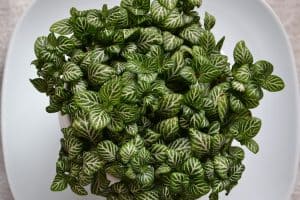 Direct exposure to the sun damages its spectacular leaves, so now you know what to do with this essential factor for the survival of an indoor plant. Good natural lighting does not mean subjecting it to inclement sun.
Direct exposure to the sun damages its spectacular leaves, so now you know what to do with this essential factor for the survival of an indoor plant. Good natural lighting does not mean subjecting it to inclement sun.
While the sun is important in your life, don’t abuse it. Place it in a well-lit place in your house
Substrate and Fertilizer: How do we prepare the land?
Fertilize it once a week with a liquid fertilizer product. It will be more than enough to keep her healthy. Only in winter you will use this extraordinary food once every two weeks.
The pot you choose to grow it in should be large enough to allow its roots to expand. Many proliferate. It does not require a special substrate, just buy one for green plants and apply it.
If you can apply a root and pearl stimulator, it will be excellent for phytonia.
This action helps the new plants take root because it has a background fertilizer that works very well in the case of transplants.
The added perlite, meanwhile, helps the soil to aerate. Some incorporated sand allows for better water drainage.
Plant phytonia step by step
- Choose a spot with partial sun. The plant needs some air circulation, so while it will thrive against a wall or fence, avoid planting it in the corner of two fenced walls.
- If the soil is heavy or not loose (doesn’t drain well), add plenty of well-rotted compost to the area and stir.
- It can be planted throughout the year if the ground is not frozen and can be well watered when conditions are dry. Spring and fall are the best times to plant this shrub.
- Dig a hole twice the width of the root ball.
- Place the plant in the hole, filling it with soil so that it is at the same depth as in the pot. Fill in around the root ball and work the soil in gently but firmly. Water well to settle the soil around the root ball.
Irrigation: How and how often do we water?
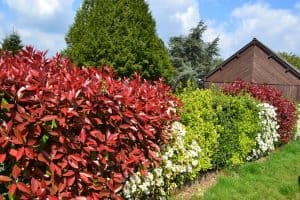 A moderate irrigation, but accompanied by constant spraying with water on its leaves, will be a key point in the maintenance of the phytonia at home. The substrate should not overflow with water.
A moderate irrigation, but accompanied by constant spraying with water on its leaves, will be a key point in the maintenance of the phytonia at home. The substrate should not overflow with water.
Avoid at all costs that the substrate becomes waterlogged and always remove the saucer with the excess water that drains from the bottom of the pot, because if you leave it the same, the roots will rot.
Finally, if you notice excessive growth, then it is time to reproduce it using the cutting technique.
Pests and diseases of phytonia
A common phytonia disease is caused by a fungus that attacks the leaves of the plant. Symptoms are red, purple, or maroon circles on the leaves.
It is important to avoid wetting the leaves if there are signs of disease because it helps spread mold to healthy leaves. The leaves will drop, eventually leading to the death of the red tip of the phytonia. It is important to completely remove dead leaves or cover them with mulch to prevent the fungus from affecting the rest of the phytonia.
Varieties of fitonias
Fittonia belongs to the Acanthaceae family. The various species are native to South America, but growers have cultivated a large number of compact forms with striking color streaks and contrasts.
Two main species of Fittonia form the basis of most houseplant crops:
- Fitonia gigantea, which can reach 60 centimeters and has purple stems with dark green leaves and crimson veins.
- Fitonia verschaffeltti is a vine that does best in saucers or hanging baskets. It is the «typical» Fittonia with many varieties, including the » Argyroneura » (silver white veins) and the » Pearcei » (reddish veins). The « Mínima » and « Argyroneura » varieties are well adapted to cultivation in terrariums.

![Photo of Aconite: [Cultivation, Irrigation, Care, Pests and Diseases]](https://www.complete-gardening.com/wp-content/uploads/2021/06/aconito_1618355790-390x220.jpg)
![Photo of Crickets in the Garden: [Characteristics, Detection, Effects and Treatment]](https://www.complete-gardening.com/wp-content/uploads/2022/08/crickets-in-the-garden-characteristics-detection-effects-and-treatment-390x220.jpg)
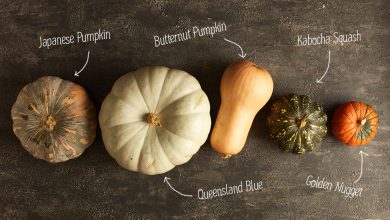
![Photo of Callas Care: [Earth, Strengthening, Humidity and Pruning]](https://www.complete-gardening.com/wp-content/uploads/2022/08/callas-care-earth-strengthening-humidity-and-pruning-390x220.jpg)